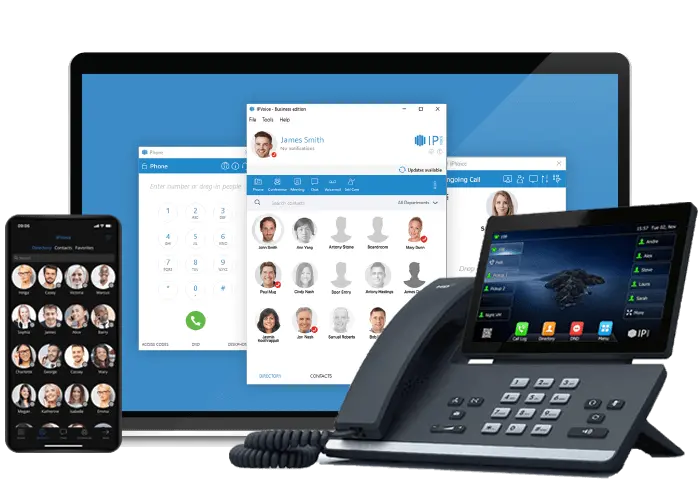Business Phone & Hosted Voice Packages
Future-proof your business by switching to VoIP


Switch to efficient digital calling
Low-cost Hosted Voice & Digital Phone Solutions
Our new voice solutions use your internet connection to offer affordable calls, including international ones. Have the flexibility to make calls from any location with internet access. Contact us to explore upgrading from traditional phone lines to advanced digital services.
PSTN and ISDN switch-off: moving to digital voice
We’re transitioning away from the traditional copper-analogue network to embrace modern IP technology by 2027. This shift will digitise voice, data, and video, allowing seamless communication over the internet

Why choose 5G?
Outstanding service
Unbeatable local knowledge, national resources, and personal service
Local expertise
Get the right solution for your business from 5G Local Business experts
The personal touch
We’ll get to know you and your business challenges
Industry leader
We’re one the UK’s leading provider of phone systems
FAQ’s
Types Of Business Lines…
There are a variety of phone lines currently available to your business, each holding different qualities which are best suited to different types and sizes of business.
In order to know the type of phone line that is going to be most beneficial for your business, you must first consider how the phone lines are going to be used.
To help you with your decision, we have provided a brief description of each of the phone line types, below:
- Analogue Single Line – Works from the local exchange, suitable for smaller businesses with just one phone
- Analogue Multi Lines – Also work from the local exchange, but allow multiple calls through one number
- ISDN2 Lines – Digital line, allows up to 8 different channels (extensions)
- ISDN30 Lines – Like ISDN2, but allows up to 30 different channels (extensions)
- SIP Trunk – An alternative to ISDN lines, Sip Trunks connect to your existing PBX using either an IP Card or IP Gateway converter.
- FeatureLine – ‘Mini’ telephone system based at the local exchange, offers features such as ‘conference calling’ and ‘call divert’ for compatible phones.
Suitability…
At 5G we recognise that every business is unique and that different types of business will require different types of phone lines. For this, we are more than happy to discuss your business phone line requirements with you, but to give you a general idea of the suitability, of each of the phone lines, we have provided a short summary, below:
- Small Business – Analogue (single/multi), ISDN2
- Small/Medium Business (High Telephony use) – ISDN30
- Large Business – ISDN30, FeatureLine
This page is related to: business phone plans, business telephone line installation.
Business phone systems can be expensive, and for many business owners, voice over internet protocol (VoIP) is a viable option at a lower price. Using VoIP instead of standard land line service might sound like a strange idea, but when you think of how many phone lines you might need for your business, and the cost associated with them, it might be time to give it a try.
With VoIP, you’ll still need to get however many phone lines you need to run your business, but the cost is often less than going with the traditional phone company.
Even the most digital businesses need phones. But these days it’s about much more than chatting. As your workforce grows and disperses, you want to be able to feel like you’re together, even when you’re not. And you want cheap bills, too.
New landlines clearly aren’t the answer – they’ll soon be defunct anyway. So, what do we do? We VoIP! We digitise voice into data so we can ditch our landlines. All you need is the right internet connection.
VoIP could save you a lot of money but you’ll need enough bandwidth to make the most of all its features. As long as you have the right connectivity, you can join your business colleagues on media-rich conference calls, and share work on screen as though you’re right there.
The new landlines (and then some). When you’re more productive, your customers feel it too.
Plus, now you can auto-reroute at busy times, and answer customer service calls from home. Your customer service is better, and that means more recommendations. And best of all: no more hideous hold music.
Find out more about our business VoIP and business Broadband deals to switch over to VoIP.
Can I access the internet over an ISDN line?
It is possible, but not advisable. Years ago, before the introduction of DSL broadband services it was not uncommon for people to use ISDN lines as a faster alternative to dial up internet. But now with DSL broadband, so much faster at affordable prices, there is no real need to do this.
What is the difference between ISDN2 and ISDN30?
The only difference between the two is the number of channels/terminals that each can support. ISDN2 lines can support up to 8 channels whereas ISDN30 can support up to 30 channels, significantly more than ISDN2.
Once I make the change over to 5G, how long will it take for my services to become active?
When signing up new customers, we generally quote between 7 – 14 working days for analogue phone lines and between 10 – 25 working days for digital phone lines.
What should I do about leaving my current provider?
We want to make your move over to 5G as quick and as painless as possible so we will strive to help you as much as we possibly can to ensure that leaving your current provider isn’t going to break the bank.
Will I save money with 5G?
Yes. If you sign up with 5G, we guarantee to save you at least 10% on your current bill.
This section is related to business phone lines, business broadband, ISDN phone lines
Call waiting – tells you if you’ve got another call waiting when you’re already on a call.
Ring back – calls to let you know when an engaged number becomes free.
Call barring – take control of what types of calls people can make from your phone.
3-way calling – set up a conference call with two other callers.
Reminder call – use your line as an alarm clock.
Caller display – see the phone number of who’s calling you.
Call sign – set a distinctive ring tone to selected incoming numbers so you know who the call is for.
Call pick up – answer a call on your own phone that’s ringing on another Featureline extension.
Call transfer – transfer a call to any other number number.
Internal calls – free internal calls within your business.
Caller display – see the phone number of who’s calling you (there’s a £20 set-up fee for Featureline).
Call interrogation – check which features you’ve got set up on your line.
Withhold number – callers won’t be able to see or get hold of your number (you can set this up for individual calls or for all calls).
Call offer – if you call an internal extension that’s busy, this will let the busy party know that you’re trying to get through to them.
Hunt group numbers – a hunt group number isn’t connected to any particular phone, but connects your caller to the first available phone within a group of extension numbers. So you can set up a group of people, all whom can handle a call, and your customers can get through to the first one who’s free to answer.
Call return – tells you the number of the last person who called you and rings them back.
Ring back when next used – if you call a Featureline extension but don’t get an answer, this will call you back and connect you after the Featureline extension is next used.
Code calling – assign a short code to your most frequently dialled numbers and save yourself a spot of finger-bother.
Repeat last call – redials the last number you dialled.
Talk to us
Why not speak to our Telephone Systems team about our Voice over IP & Hosted Systems.